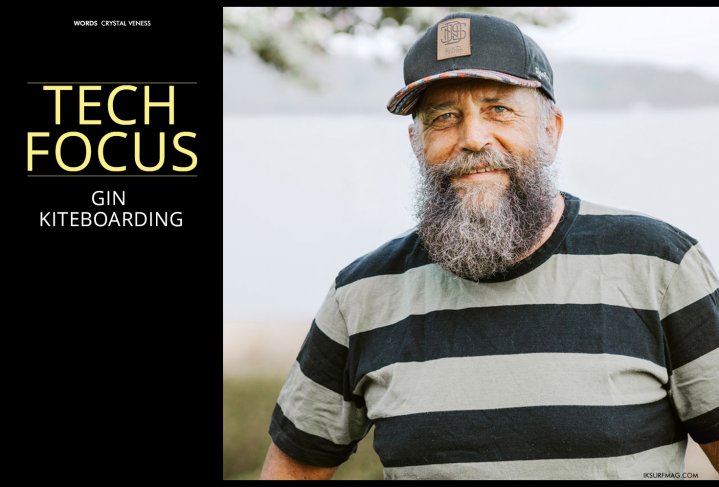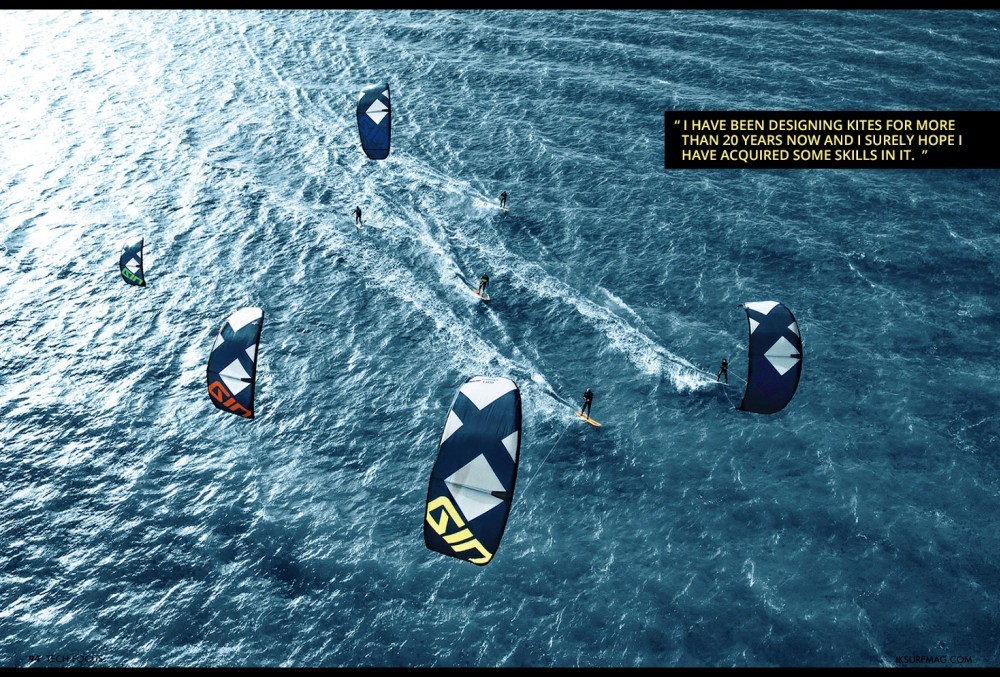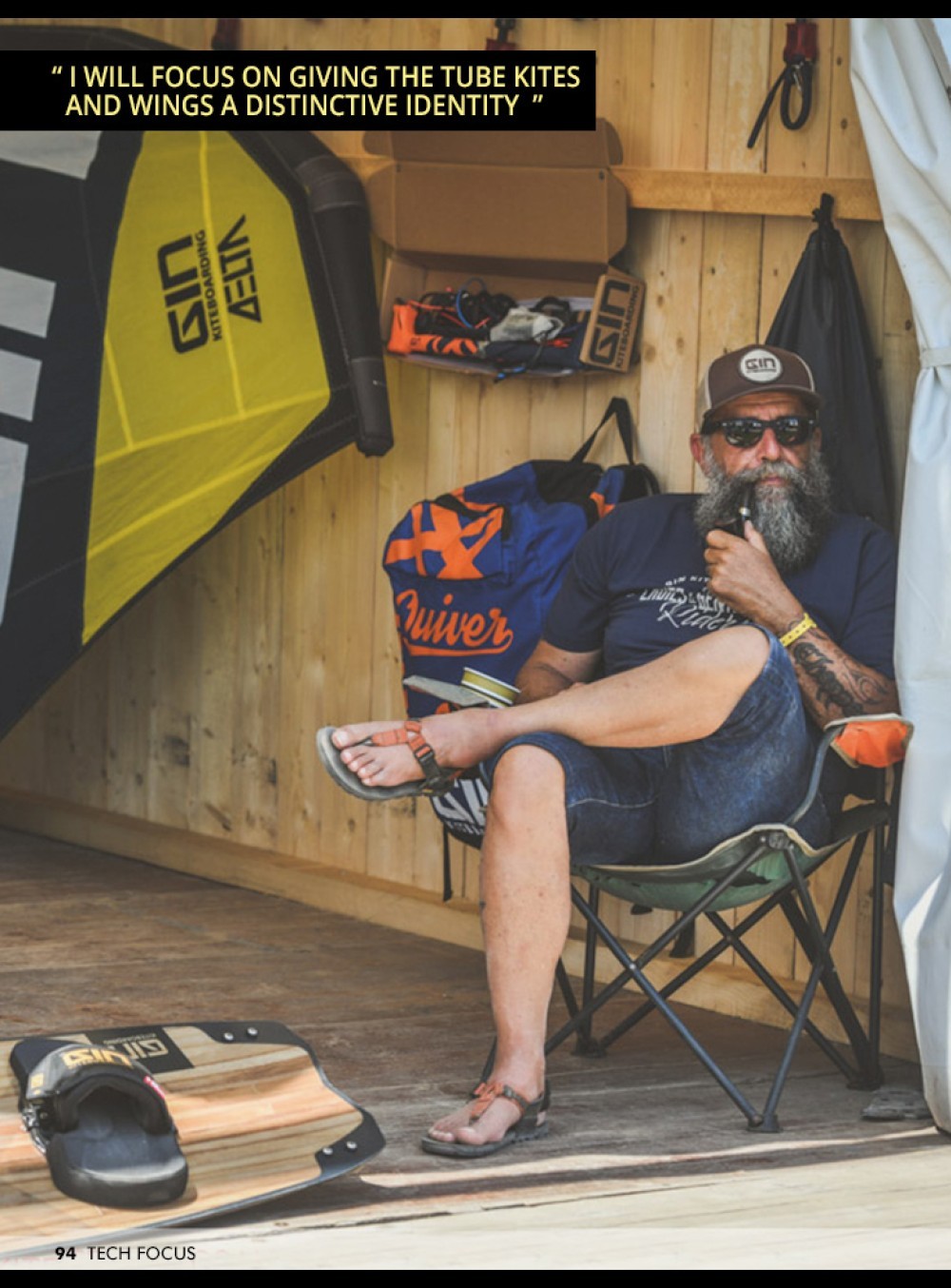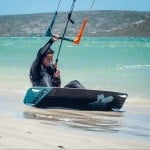
Tech Focus: Gin Kiteboarding
Issue 94 / Tue 9th Aug, 2022
The Gin Kiteboarding team has recently welcomed designer Sylvain Peretti. With a focus on inflatable kite and wing development, we find out what he brings to the table in this Q&A!
Hi Sylvain, thank you for taking the time to join us for this Tech Focus interview! As the newest addition to the Gin design team, we had to find out a bit more about you. Tell us a bit about yourself and when you started kitesurfing?
I started kitesurfing pretty late, in 2008 to be precise. At that time, I had been designing kites since 1997, but I had gotten into a serious motorcycle accident which had paralyzed my leg, so it was impossible for me to put my feet in straps without risking spraining my ankle. During a kitesurf trip, around the time strapless kitesurfing emerged, my roommate convinced me to have a shot at it, and I have been kitesurfing ever since that very precise day! The funny thing is that I have never tried a twin tip in my life, but I still have a very wide range of variations to choose from within the sport itself (strapless surf, foil, tiki, wing). But I must say, having been in the industry for so many years, I would probably have tried it anyway at some point, just out of curiosity.
What are your responsibilities at Gin Kiteboarding and what experience do you bring to the team?
I am in charge of tube kites and wing design. Long story short, I have been in sail making since the end of the 70's (boat & windsurf sails). Then, at the end of the 80's, I started to design paragliders. And at the end of the 90's I started to design kites! I have been designing kites for more than 20 years now and I surely hope I have acquired some skills in it.
How do you feel about your new adventure at Gin Kiteboarding?
I am thrilled about my new collaboration with Gin Kiteboarding, whose global project I find very interesting. To me, it is a very complete brand, which creates premium equipment. I like the way of working that is set in place within the team. Everybody just gathers and shares about various topics, in a collegial way.
While Gin has a strong line-up of foil and ram air kites, there have been some new additions to the inflatable range. Are you focused primarily on the inflatable line up?
Yes, I will focus on giving the tube kites and wings a distinctive identity, which is already the case for Gin’s ram air kites.
Tell us more about the recently released Quiver! Aimed at the free ride market, can you tell us more about the flying and performance characteristics?
The concept behind the Quiver is a kite that is able to suit any board (twintip, surf, tiki, or foil) that an advanced rider could use depending on the weather or the spot.
Can a free ride kite suit riders that are focused on progression? What aspects of the Quiver work well in big air, wave riding, freestyle, or foil applications?
Yes, definitely! Because every size of the Quiver is specifically designed to suit a logical practice by size. The 15m is a cruising session saver, the 10m and 12m are more twin tip, free ride and jump focused, while smaller sizes are more surf and foil oriented. But again, they are flexible enough to adapt to any practice
I have to ask; what is a Tiki, and why is the Quiver a good compliment to this type of board?
The Tiki is an adaptation of the ancient surfboards (alaya) to the kitesurfing world. A little rocker at the front and a small fin at the tail makes it easier to ride and have fun in any conditions. I used to say to my friends that if they thought the spot looked shitty, they should take their Tiki and they would have fun... and if conditions are good, it will just be better!
What is the process of starting a new kite design?
After many years of experience, I now have a relatively large design database that I can use. I know the characteristics of each type of kite, so I base my new designs on existing foundations. Nowadays our job isn't really about creating new kites, we basically adapt the designs to new types of practices and to new demands.
How do you get inspiration for your designs?
Whenever I conceive tube kites, I try to create kites with which, as an average rider, I would like to sail with. I ask myself which characteristics are important to me. I am a practitioner and a designer, so I can identify how to improve my own comfort when sailing.
When the products are more advanced (hangtime kites, wings, ...), the most important thing is to listen very carefully to your audience. I am lucky enough to be surrounded by very talented riders, who can speak freely about the technique and report their feelings to me about every kite I make. They spend time trying pretty much anything I design. So in the end, it is all about trying and consistently receiving feedback.
What sort of obstacles do you face in your job?
The conception work is often upsetting. You regularly get disappointed by the tests; the process is demanding and there are long periods of errors. To overcome those periods, the key is to stay open minded, to know whenever you are wrong, and to be able to question yourself. When you can’t find the answer, maybe the question is not right. Come back to what leads to a certain concept. A big clash can lead to big turnarounds, but sometimes starting from scratch is what is needed for your project to thrive.
Do you have some more ideas for the future you want to implement into Gin's designs?
Sure! To me, I see future evolutions in raw materials, with the purpose of reducing weight as much as possible (new composite fabrics, carbon, etc.). In fact, materials have evolved very little over the years. Some parts of the kite are still similar to the ones used 30 years ago, with the main reason being that access to these materials is very limited. It requires setting in motion very heavy industries for which the kite business doesn't represent a market considerable enough. There is definitely room for growth here, and it is therefore certainly going to be a major step forward!
By Crystal Veness
Editor at IKSURFMAG, Crystal Veness hails from Canada but is based in South Africa. When she isn't busy kitesurfing or reporting on the latest industry news for the mag, she is kicking back somewhere at a windy kite beach or working on creative media projects.










